Blue Apron has over 1 million customers, and has sold well over 10 million meal kits. They’ve single handedly pioneered the entire meal delivery industry.
To create the kind of growth they created, they used several innovative marketing strategies. They were early adopters in podcast advertising, created a truly unique referral program, and manage a powerful blend of online and offline marketing channels.
So, what allowed Blue Apron to grow so quickly? How did they go from startup to revolutionizing the food industry? And, why is the company also struggling to turn a profit?
Let’s take a look at what we can learn from this behemoth’s marketing stack.
Introduction & Table of Contents
Blue Apron is a master at scaling up. They’re in dozens of different marketing channels, from the oldest of old media to the newest of new.
We won’t look into every channel Blue Apron’s advertising in. Instead, we’ll examine the most interesting things they’re doing in their marketing. We’ll skip paid search and social – although Blue Apron spends a lot in these channels, their strategy is fairly similar to other companies.
Here’s what we’ll cover (clickable):
The overall strategy looks something like this: use a wide range of different marketing channels to entice new customers. Measure the cost of acquiring customers, as well as the lifetime value of those customers, for each channel they’re advertising in. Reduce ad spend in the channels that don’t work, and scale up the ones that do.
Some of their channels, such as podcasts, can be directly measured using custom links (i.e. BlueApron.com/NPR). Others, like their TV ad buys, likely need to be measured with a mix of sales metrics and brand metrics.
The $35 Million Blue Apron Referral Program
Blue Apron spends a fortunate on referral marketing. In 2016, they spent $35 million on customer referrals.

Source: Blue Apron S1 (IPO filing)
How does their referral program work?
The main idea is that their top customers most likely know people who are similar to themselves. If you’re an upper middle class family who likes to cook, you probably know other upper middle class families who like to cook.
Blue Apron is confident that if they can get those people to try their service, they’ll stick around and be a customer for a long time.
Well, what better way to get them to try it out than to send them a free box?

That’s right – Blue Apron spends $35 million a year on giving away free food. And those free meals are some of the best marketing dollars Blue Apron spends.
Of our Customers for the first quarter of 2017, 34% were acquired through our customer referral program, in which certain existing customers may invite others to receive a complimentary meal delivery. — Blue Apron S1 (IPO filings)
In Q1 of 2017, referrals was 14.75% of marketing spend, but was responsible for 34% of their customers. Presumably, these customers most likely spend more and stay customers for longer as well. It’s entirely possible that half of Blue Apron’s revenues comes from referrals.
A few ingredients go into the success of this strategy:
- Have a great product that people want to share.
- Give them a great offer that they’d feel good about inviting friends to.
- Make sure the customer value created is larger than the spend.
Blue Apron isn’t alone in using this strategy, of course. Dropbox used a similar tactic to get to 4 million users in less than 2 years. Of course, it’s much easier to scale a referral program when you’re selling software rather than food. Blue Apron’s referral program is one of the most successful in the physical products industry.
Online Marketing Channels
Blue Apron’s Podcast Advertising
Podcast advertising today is like Facebook Ads 5 years ago. Response rates are high, costs are low, and few advertisers understand how the channel really works. It’s a big opportunity right now that only a few companies have taken advantage of.
Blue Apron was one of the first companies to really scale their podcast ads. They blanketed the airwaves (pod waves?) and have since scaled up to buying ads in just about every category.
Here are a couple examples of Blue Apron’s podcast ads:
Blue Apron’s Podcast Ad – on the “No Sleep” Podcast:
Transcript:
Younger Cop: Do you really think the valentino brothers will show?
Older Cop: They have to! If our intel is right, this is their base of operations.
Younger Cop: Yeah, but we’ve been sitting in this squad car for hours. My legs are cramping up.
Older Cop: This is your first stake out right? Eh, just sit there and be patient.
Younger Cop: (Grumble) ugh I’m so hungry, didn’t you bring snacks?
Older Cop: That was your job, kid.
Younger Cop: Ugh we’re gonna starve to death. Hey is it true what they say about the oldest Valentino? They call him the surgeon because he decapitates his rivals and keeps their heads?
Older Cop: Don’t believe everything you hear. Look alive kid, this might be them.
Younger Cop: Nope, its’ a delivery truck. Oh! Blue Apron!
Older Cop: Blue Apron?
Younger Cop: Yeah, they’re the #1 food delivery service in the country. I signed up a few months ago by going to BlueApron.com/nosleep. Their food is incredible. Their culinary team likes to surprise us with new recipes that aren’t repeated for a year. Last night I gorged myself on seared steaks and peppercorn sauce, with roasted potatoes and green beans. Mmm, so good.
Older Cop: (Grumble)
Younger Cop: heh, looks like I’m not the only one who’s hungry.
Older Cop: Shut it, I didn’t have breakfast.
Younger Cop: Look at that box, sitting all alone on the door step. EAT ME it’s saying, EAAT MEEE.
Older Cop: Don’t tempt me.
Younger Cop: You know, not all ingredients are created equal. Their seafood is sourced sustainably, their beef, chicken, and pork come from responsibly raised animals, so you know it’s going to be delicious. It’d be a shame to waste all that good will on the Valentino brothers. We could run over there real quickly and make supper.
Older Cop: Even if I entertained the notion, we wouldn’t have time to cook anything before the Valentinos got back.
Younger Cop: Actually every meal can be prepared in 40 minutes or less with step by step recipe cards. They’ll never know we were there!
Older Cop: Ugh fine, don’t make me regret this. Wow, there’s exactly enough here for two people. I’m always buying too much and have to throw things out! So which recipe should we make?
Younger Cop: The meatball with tomato sauce with asparagus and creamy rice sounds amazing.
Older Cop: Whoa this would pair great with wine! Go see if there’s any in the cellar will ya?
Younger Cop: Hey remember that rumor about the decapitated heads? I found them … and they’re still breathing!
Narrator: Check out this week’s menu and get your first 3 meals free by going to BlueApron.com/NoSleep. Blue Apron, a better way to cook.
This is a fantastic example of an ad that blends into the show’s style (the show is a horror fiction show). Here’s another example:
Blue Apron’s Ad on “You Are Not So Smart”:
Blue Apron’s podcast ads are almost all read by the host of the podcast. They’re running ads across many different categories – from health podcasts to true crime and everything in between.
Here are a few tips for podcast advertisers:
- Typical rates are $8 to $40 per thousand downloads (CPM). The rates vary based on the popularity of the podcast, as well as the category the podcast is in. The True Crime category might average around $10 CPM, while the tech or business category might average around $30 CPM. Then you have the really popular shows, which can command CPMs of up to $50.
- Always go for host read ads. Don’t submit a sound clip to have them insert into the podcast. One of the reasons podcast ads work so well is because you get to leverage the connection the host has to the audience. Don’t make it sound like a traditional ad – personalize it.
- Programmatically inserted ads usually don’t perform well. Programmatically inserted ads mean you’re buying ads in a podcast for a certain amount of time. For example, for the month of June, when a listener downloads a podcast episode, your ad will be “inserted” into the ad slot as the customer downloads it. In July, your ads are removed and someone else’s ads will be inserted. These types of ads generally perform far worse than “hard coded” ads, where the ad is actually recorded into the episode rather than inserted via software.
Blue Apron Sponsoring YouTube Channels:
Brands often pay YouTube stars to create videos about their brand. You get to leverage the connection YouTubers have with their audience, and get a unique piece of content created.
YouTubers have a well honed sense of showmanship, and can create videos that really “wow” audiences. Depending on the agreement you have with the YouTuber, you might be able to use those content pieces in other places – your website, your Facebook Ads, etc.
That said, this channel is harder to manage than many other channels. Instead of buying impressions through an ad platform, you’re making deals directly with various YouTube personalities. And, like doing business with the artistic, it can be a quirky experience.
There are, of course, agencies who which specializes in managing that process for you. Typically they charge a 25% premium on top of what the YouTuber charges, and come with a a $25,000 minimum investment.
Example: Blue Apron’s Sponsored YouTube Video,
“Cooking the Perfect Meal”
This skit is short, funny, and really gets the Blue Apron value prop across. I’m a big fan – it’s worth a watch:
 |
If you want to experiment with sponsoring YouTube videos, Famebit is the primary avenue for doing so. Famebit is a platform that connects YouTube influencers with advertisers who want to sponsor them. They were acquired by Google in 2016. For a more “done for you” approach, Grapevine is an agency that specializes in this.
This channel only works for certain kinds of businesses. For businesses in fashion, food, or fitness YouTube sponsorships can work great. For businesses selling intangible products – software, consulting, etc – YouTube is not a very good channel. Basically, if there are a lot of people creating YouTube channels about your topic, then it could be a good channel.
When paying for YouTube sponsorships, here are a few things to look for:
- Typical rates are between half a cent to 1 cent per subscriber. In other words, a channel with 100,000 subscribers should cost $500 to $1,000 for one sponsored video.
- A good view through rate is about 15%. In other words, a channel with 100,000 subscribers should get around 15,000 views per video they release.
- The size of channels you advertise in should be between 100k to 500k subscribers. Channels with less than 100k subscribers are usually hobbyists, who might not take the video seriously. Over 500k channels often have agents and demand higher CPMs. Between 100k and 500k is the sweet spot.
Blue Apron’s Display Advertising Prowess
Blue Apron’s display ads are gorgeous. Their copy is witty. Overall, they do a great job.
That said, according to SimilarWeb, display is a very small percentage of Blue Apron’s traffic:

Of all their marketing channels, display is likely the least effective. I’ve also usually found display to perform worse than most other channels.
It works for retargeting. It can work great for retargeting. But for bringing in new customers, I’ve generally found display to be much worse than most other channels.
All that said, I do love the photography and copy that Blue Apron’s got going. They know how to make some pretty great ads.
 |
 |
 |
 |
Blue Apron’s Sponsored Reviews via Native Ads
Blue Apron is a big advertiser on native ads. Native ads are those annoying ad units at the bottom of most news sites. They tend to blend in with the news style of the site, using attention catching headlines and photos to try and entice a click.
The three most common native advertising networks are Outbrain, Taboola, and Yahoo Gemini. Typically advertisers send readers to a “pre-sale page”, rather than a product page, which is designed to introduce people to their product.
In this case, Blue Apron introduces people to the idea via a “We Tried Blue Apron: Here’s What Happened” ad. This directs visitors to a page where the writer shares their experience with Blue Apron.

This ad then takes you to a page like this:

Native Ads work best when combined with retargeting. Since most customers aren’t necessarily in the mood to buy right now, retargeting becomes even more important with Native Ads.
Native Ads generally convert worse than Facebook, Podcasts, or paid search, but offers more scale. It’s best to get a couple other channels to work first, before scaling up by adding native ads.
Offline Marketing Channels
Blue Apron TV Advertising
TV is an interesting choice for Blue Apron. Traditionally, TV ads are bought by advertisers looking to buy mind share. They’re looking to increase awareness of their brand, and associate more positive emotions to their brand, so that when someone’s considering a purchase, that brand comes to mind. Colgate buys TV ads so that when you’re in front of a the tooth paste section at the grocery store, you’ll buy Colgate instead of Crest.
Blue Apron is different. They’re trying to generate sales directly. There is never a moment where you’re standing in a grocery store, choosing between Blue Apron, Hello Fresh, and Plated. Instead, they have to get people to think “oh, that’s a product I want to try – let me go online and buy that.”
Blue Apron is a bit of a pioneer in this aspect. Although “infomercial style” commercials have worked in the past, those usually come at the cost of bad branding. Blue Apron’s TV ads are beautifully branded, and aim at driving sales.
It’s a kind of hybrid between a direct response ad and a branding ad.
Compared to channels like Facebook Ads, podcast ads, and YouTube, TV’s targeting capabilities are clearly inferior. However, TV has massive scale. It’s impossible to spend $10 million on podcast ads or YouTube influencers in an effective way. It’s very easy to spend $30 million on TV.
At a certain point, scaling up becomes more important than getting the best ROI out of your marketing dollars – especially if you have venture capitalists or Wall Street to please. But then again, spending money on marketing that doesn’t pay off is a big part of why Blue Apron’s struggling to get profitable.
Blue Apron Radio Advertising
Blue Apron spent $293,000 in 2015 and $2.41 million in 2016.
Radio is much more scalable than podcast ads. Since radio has been around for so long, many agencies already have the knowledge and connections to buy ads at scale. Podcasts are still a bit of a Wild Wild West compared to radio. And podcasts don’t have the scale. Geico alone is estimated to spend more on radio ads than all of podcast ads combined.
For brands that need scale, podcast is not replacing radio anytime soon. Yes, podcasts are growing very quickly, but radio is still where the eyeballs (ear drums?) are.
Typical CPMs are $10 to $20, or about half of podcast rates.
Here’s an example of a Blue Apron’s radio ad:
Just like their podcast ads, this is a host-read ad, integrated into the style of the show itself. They’ve basically taken podcast-style ads and turned them into radio ads.
Blue Apron Direct Mail
Blue Apron is a big advertiser in direct mail. Direct mail’s one of the oldest and most proven channels for direct response marketing.
Blue Apron often participates in what’s called co-op marketing. Essentially the way it works is this:
- Companies enter into the co-op by submitting their customers’ names and addresses.
- The names and addresses, along with purchase data, create a database that’s shared among everyone else in the co-op.
- Once you upload your customers, you’ll be able to access everyone else’s customers as well.
- Using your customers as a baseline, an algorithm can find other people in the database who are similar to your customers. You can market to those people to try and get them to buy.
This is very similar to Facebook’s lookalike audiences, except applied to direct mail. It generally yields higher returns than any other direct mail strategy. Other strategies include zip code mailing, mailing based on magazine subscriptions, and mailing based on people who’ve purchased certain products.
The trade-off for co-ops is around privacy. More details on how co-ops work can be found here.
Example Blue Apron Direct Mail Piece:

Although Blue Apron often uses co-ops, they probably test different kinds of mailing lists as well.
In addition to the different groups of people they mail to, they also test the format and messaging of their mail pieces. Above is a three-section dropdown format. They also send postcard format, in an envelope format, and several more elaborate formats as well.
Understanding Blue Apron’s Marketing Metrics
Blue Apron’s marketing team did a lot of things right. They took a new concept and introduced it to millions of people. In a way, they are a smashing success.
Unfortunately, there’s a lot of problems with their core metrics. Let’s take a look.
Blue Apron Customer Acquisition Cost
Blue Apron’s customer acquisition cost is a mix of their marketing spend, as well as the discount they give to initial customers. They typically give away some number of free meals on a customer’s first order, which is included in their acquisition cost.
Blue Apron tells us their acquisition cost is $94 between 2014-2016. That’s an average, which most likely hides a rising acquisition cost. Fortunately, using data from Blue Apron’s public filings, several analysts have calculated their current acquisition cost to be between $150 and $400 per customer.
Cancellations of Blue Apron
Blue Apron also doesn’t provide any data on cancellation rates.
Fortunately, a third party company called Second Measure does. Second Measure buys data from credit card and loyalty card companies. By aggregating data from thousands of credit card statements, they can figure out how often people stay subscribed to various companies.

By the 3 month mark, Blue Apron loses more than half of their customers. Within 1 year, Blue Apron loses about 80% of their customers.
In other words, Blue Apron is great at getting new customers. Keeping customers? Not so much.
Blue Apron Lifetime Value
Lifetime value is how much a customer is worth, over the lifetime of their relationship with the business. Blue Apron’s LTV is not that hard to figure out.
Their gross profit margin is about 22%. Their average order value is $58. That means they’re making around $12.50 per order.

In other words, if they’re spending $150 to acquire a customer, they’d need customers to stick around for 1 year to break even. Unfortunately, by 1 year they’ve already lost 80% of their customers.
The Big Picture
Blue Apron – while brilliant in many of their acquisition strategies – is losing money. When they first went public, they were worth $1.9 billion. Today, they’re worth $500 million. That’s about 25% of their IPO value. Most of this is because their marketing metrics don’t work out.
This doesn’t mean Blue Apron can’t be a viable business. It just might be a smaller business than investors expected. It’s entirely possible that they can scale down their marketing spend to just the most efficient channels, and have a business that grows slowly and runs profitably.
Of course, a slowly growing but profitable company is not what Wall Street wants.
Whether Blue Apron will make it is still to be seen. But, one thing’s for certain – they’ve pioneered a lot of marketing strategies we can all learn from. From their massive buys in podcast ads, to their $35 million referral program, to their hilarious YouTube videos, there’s a lot in their marketing mix we can all learn from.
What are your thoughts on Blue Apron’s marketing? Share in the comments below!
Ian Luck
Founder, MarketingStrategy.com

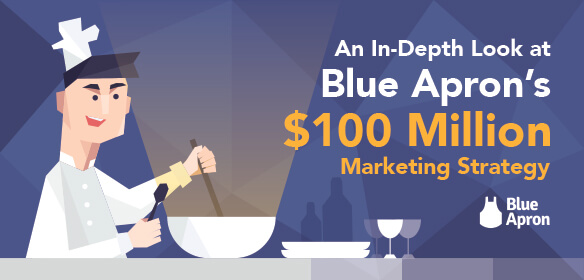


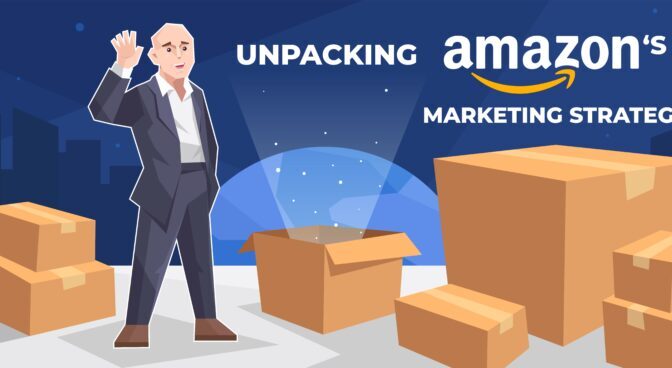
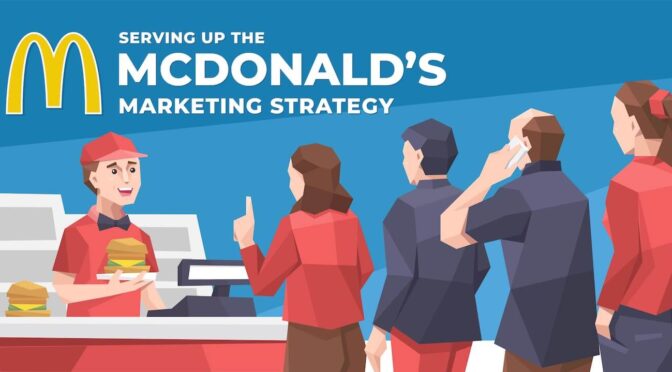
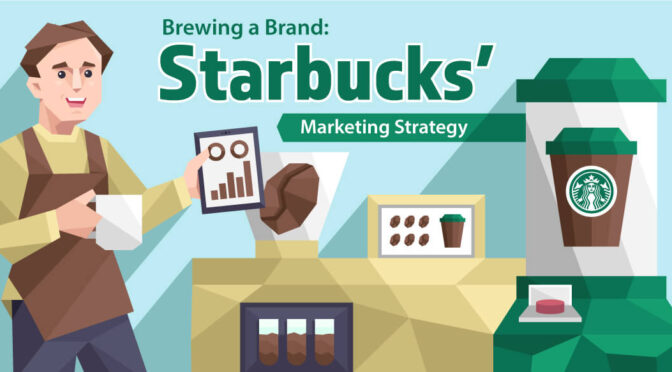
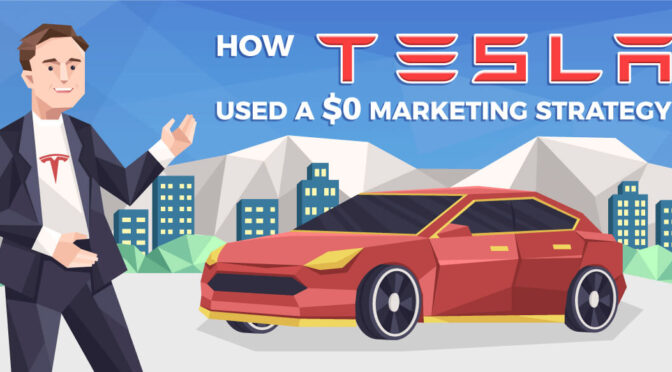











What’s up to every body, it’s my first visit of this weblog; this website contains amazing and truly excellent information for readers.
Title
DirectorSpecialties
Great overview, I wonder if they’ll adjust their tactics as more competitors enter the space? Will be interesting to see…
Title
ConsultantSpecialties
These food subscriptions have yet to pickup in the EU Hard to imagine they ever will…nice marketing tho.
I have read your blog carefully and you provided good information
Seo Company in the uk That s why we do everything we can to introduce your business or website to people Seo Company in the Uk.